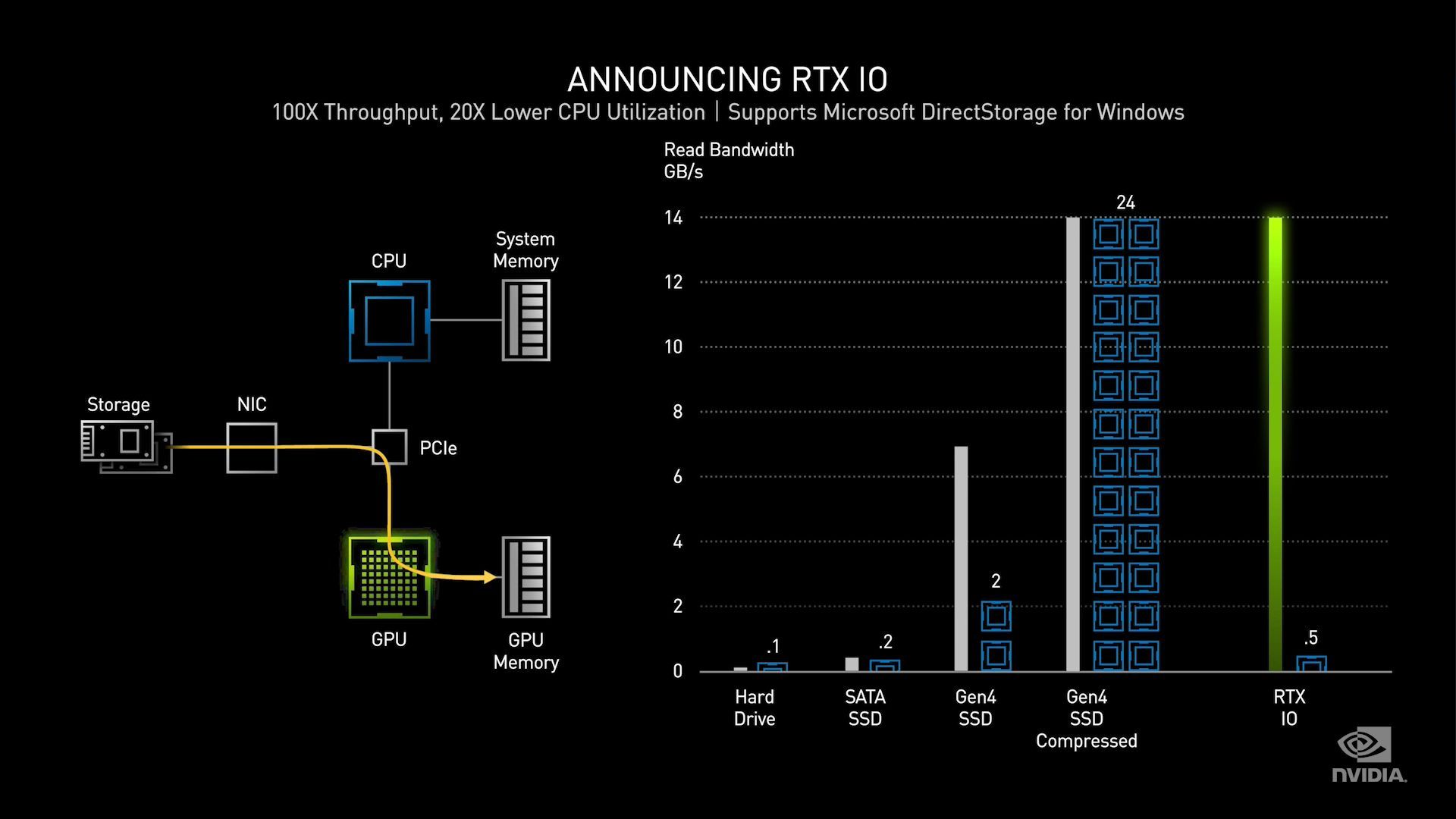So it looks like they've brought GPUDirect Storage to the desktop. Awesome.
I found this quote particularly interesting from Microsoft on Nvidia's web page:
The emphasis is mine and it implies that it'll be a standard feature of Direct Storage games to use advanced compression. It would make sense if that compression scheme were the same as used in the XSX, i.e. BC-PACK. A possible further hint towards that is the compression ratio advertised for the XSX and that used by Nvidia in their slide are the same at 2:1.
I'm not sure why. 22GB/s is the theoretical limit of the PS5 decompressor, not what you're going to achieve with normal game code and Kraken. Sony advertised 8-9GB/s from a 5.5GB/s raw throughput for a reason - because it's in line with typical Kraken compression ratio's.
Microsoft are advertising more than that for BC-Pack at 2:1 and that's the same compression ratio used by Nvidia in their example too. So starting with a higher raw throughput (7GB/s vs 5.5GB/s) and adding a higher compression ratio results in the 14GB/s being advertised by Nvidia being reasonably comparable to the 8-9GB/s advertised by Sony. Note in their presentation Nvidia also mentioned the GPU decompression could run faster than the limits of a 7GB/s SSD. That's analogous to Sony's mention of the hardware decompression block being capable of 22GB/s peak.
Nvidia clearly showed in their slide a 14GB/s decompression rate (2:1 compression ratio on the fastest PCIe 4.0 NVMe drives), and they go on to state that the GPU's are capable of more. It seems pretty open and shut to me and I'm not seeing the basis for assuming a hardware decompression block is going to be more performant than a GPU packing tens of TFLOPs. The console manufacturers could easily have included them simply because they were relatively cheap compared to including a slightly bigger more powerful GPU capable of doing the same job in shaders.
EDIT: damn... @Dictator beat me by 60 seconds and said it better too.
This was before Oodle texture. I suppose we will see game well above 10 GB/s with it. if no Sony would have gone with a slower decompressor, it would have been cheaper.

